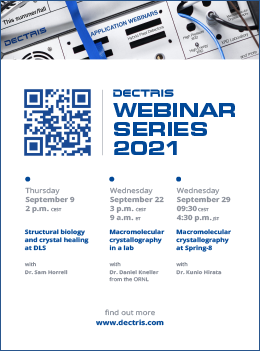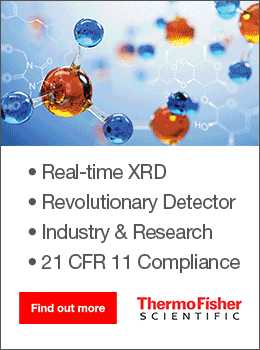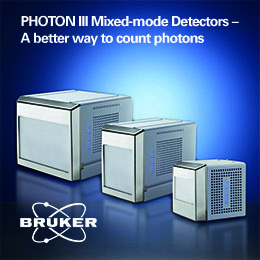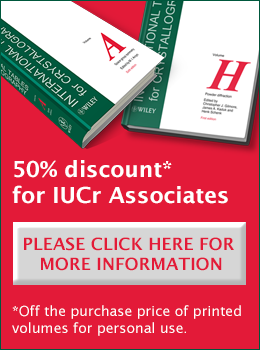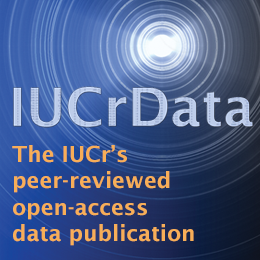


Editorial
Editorial
![Thumbnail [Thumbnail]](https://www.iucr.org/__data/assets/image/0020/151706/thumbnail_quasi.gif)
Centre image by permission of Thomas Hooper (Stainlessvision).
What passes for summer is now upon us, and thoughts are turning to the possibility of being able to enjoy a holiday in foreign parts. Here in the UK, the latest plan is to remove most of the COVID restrictions by 19 July despite warnings from many scientists. I think we are part of an experiment. We shall see.
One of the (many) problems of getting older is the frequency with which one sees old friends passing on. Recently, I was shocked to hear of the death of John Spence (we hope to have an obituary in the next issue). You may recall that John wrote a fascinating article for us last year.
Another well-known crystallographer who has passed is Sidney Abrahams. A stalwart of the IUCr, Sidney was for several years Editor-in-chief of our journals. At the time, I was Editor of J. Appl. Cryst. and so attended many journal commission meetings chaired by Sidney. We also had common research interests in the field of relating crystal structures to physical properties. Also in this issue, we report the deaths of Joseph Yariv (born Poland, died Israel), Sow-Hsin Chen (born Taiwan, died USA), Jerry Jasinski (USA), Ekkehart Tillmanns (born Germany, died Austria), Nikolay I. Leonyuk (Russia) and Graciela M. C. Punte (Argentina).
On pleasanter matters, I was delighted when English Heritage erected a blue plaque in honour of Kathleen Lonsdale. These are rare recognitions of places where famous individuals have lived or worked, and those of you who have been to England may have seen these on buildings.
There has recently been a great deal of discussion on the meaning of the word “crystal.” The problem arose when it was discovered that the old rules about periodic arrays of atoms and molecules (as taught in most textbooks) to define a crystal needed some amendment after Nature threw a curveball several years ago, with the discovery of quasicrystals by Dan Shechtman (Nobel Prize in Chemistry, 2011). It turns out that defining a crystal requires much more careful consideration. Recently, Carol Brock set up a discussion by the IUCr Nomenclature Commission to consider this problem and, following this, was able to update the definition in the Online Dictionary of Crystallography in order to reconcile the old and new definitions. It would be interesting to hear what you, the reader, think about this. Simply send me your comments directly, and we can then publish them as a letter.
Two great Russian scientists also figure in this issue. Yuri Slovokhotov and Alex Yanofsky tell us about Yuri Timofeevich Struchkov, who was a renowned crystallographer, widely admired throughout the world for the huge range of his research. He and his group were prolific in publishing their work, and indeed Struchkov’s name was on hundreds of papers. In 1993 he was elected as Vice-President of the IUCr.
Istvan and Balazs Hargittai have written about one of the most influential Russian crystallographers of his time, namely Aleksandr Isaakovich Kitaigorodsky, who was Struchkov’s PhD supervisor. I have a personal connection to him in that when I was doing my PhD research beginning in 1965, my topic was the crystallography of mixed organic crystals. Kitaigorodsky was the only other person in the world working on this at the time, and so I was an avid reader of his papers and books, using my rudimentary knowledge of Russian plus the help of a dictionary. Now, this leads me to an anecdote. I had always wanted to meet the great man, and in 1966 I was able to attend the IUCr Congress in Moscow. I took the opportunity to visit Kitaigorodsky’s Institute, but unfortunately, he was not there then. I did get to meet some of his staff members and see the equipment that I had read about in his publications. The next opportunity came in 1975 at the IUCr Congress in Amsterdam. Kitaigorodsky had been allowed to leave the Soviet Union to come to the conference for the first time in many years. He was supposed to have a poster on his work, and so in anticipation, I went to look at it. I was most disappointed to see that the poster board was blank and no sign of my hero. So I then set about tracking him down and eventually found him sitting on a chair out in a corridor giving court to several of his acolytes who surrounded him. I went up with some trepidation and introduced myself to him. I said, “Professor Kitaigorodsky. I was sorry to see that you had not put up your poster. I was so looking forward to discussing it with you.” He laughed and then replied very slowly, “Well now ... if I go to the poster board ... then I would have to put my poster there ... and then people will come to see my poster ... and then they will ask me questions about it ... and then I will have to answer their questions ... . Better not to put the poster there.”!
Finally, very recently, the biological crystallography community has received a most important boost to their abilities to solve biological crystal structures. The development of artificial intelligence in the prediction of protein folding has caused considerable excitement, especially as the organisations involved have now made this freely available to everyone. I am grateful to John Helliwell who has written about this fantastic tool for the Newsletter here.
Copyright © - All Rights Reserved - International Union of Crystallography


